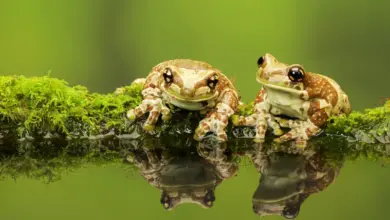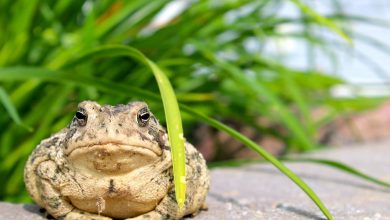Each year, as temperatures warm, ponds and wetlands come alive with masses of tadpoles hatched from gelatinous globs of eggs laid by various amphibian species.
Male and female adult frogs and toads must migrate each springtime from woodlands and fields toward specific aquatic sites to mate and spawn. Following external fertilization, each adult female produces vast numbers of eggs since few will survive to full development.
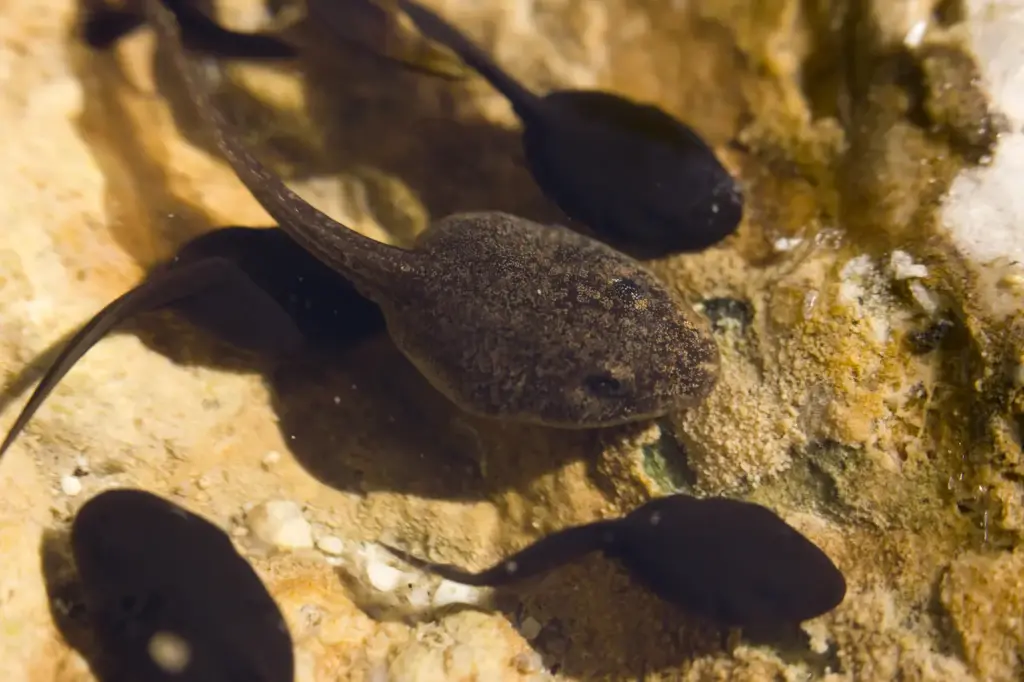
Shortly after egg laying, legless tadpole larvae emerge and school together by the thousands for protection within nourishing nursery sites. Lacking limbs, tadpole locomotion depends on vertical tail fins to propel through water while breathing via gills.
During the ensuing weeks, tadpoles face grave challenges from innumerable hungry predators who are able to take advantage of the helpless leggy larvae.
Myriad carnivores and omnivores feature adaptations enabling successful aquatic ambush and pursuit tactics to hunt vulnerable tadpoles.
Schools of fish, flocks of birds, swarms of insects, prowling snakes and turtles, as well as lumbering mammals, all congregate for seasonal feasting upon the bounty of easy tadpole prey.
Tadpoles experience up to 99 percent mortality prior to completing metamorphic changes into mature tetrapods. Only by producing absurd surpluses of offspring can amphibian species endure overall.
Leeches
Disgusting to most yet vitally integrated into aquatic ecosystems, leeches represent significant tadpole parasites. After detecting hatchlings, leeches swiftly affix to individual tadpoles until engorged, drawing out fluids through incisions that weaken developing frog larvae.
Leeches thrive in the same backwater ponds, lakes, and wetlands utilized by breeding frogs seeking shelter for offspring. So leech encounters prove quite common, though difficult to observe beneath the surface as they attach.
Whether large 8-inch giant brown leeches capable of killing weakened tadpoles directly through blood loss or tiny common pond leeches that concentrate devastating impacts through parasitizing masses, leeches undoubtedly constrain frog reproduction via larval suppression.
Leeches secrete anesthetizes at wound sites, allowing them to remain fastened for weeks, continuously extracting nutrients and body fluids.
Every meal and bite diminishes the tadpole, stunting development. Losing too much bodily fluid leads to organ failure as the tadpole wastes away, if not the leech’s direct next blood meal.
Fish
The foremost tadpole predators found nearly everywhere frogs breed are opportunistic fish. With excellent vision attuned to perceiving movement in the water to pinpoint prey, fish readily notice tadpole activity and swoop in on defenseless larvae.
Species as tiny as written minnows just 3 inches long lunge to inhale multiple tadpoles in quick repeating bites. Meanwhile, foot-long adult sunfish suck down large mouthfuls of hatchlings at once.
No fresh waterways are safe when populated by fish, which collectively account for consuming vast numbers of tadpoles.
Whether large fierce fish like pike and bass that individually consume hundreds of tadpoles daily or schools of smaller fish targeting egg masses and recently hatched tadpoles as a nutritious group, fish decimate many frog populations before tadpoles complete metamorphosis into adulthood.
Only through frogs laying thousands more eggs in the next breeding cycle can overall frog numbers be sustained despite such predation losses to the myriad fish sharing their aqueous breeding sites.
Birds
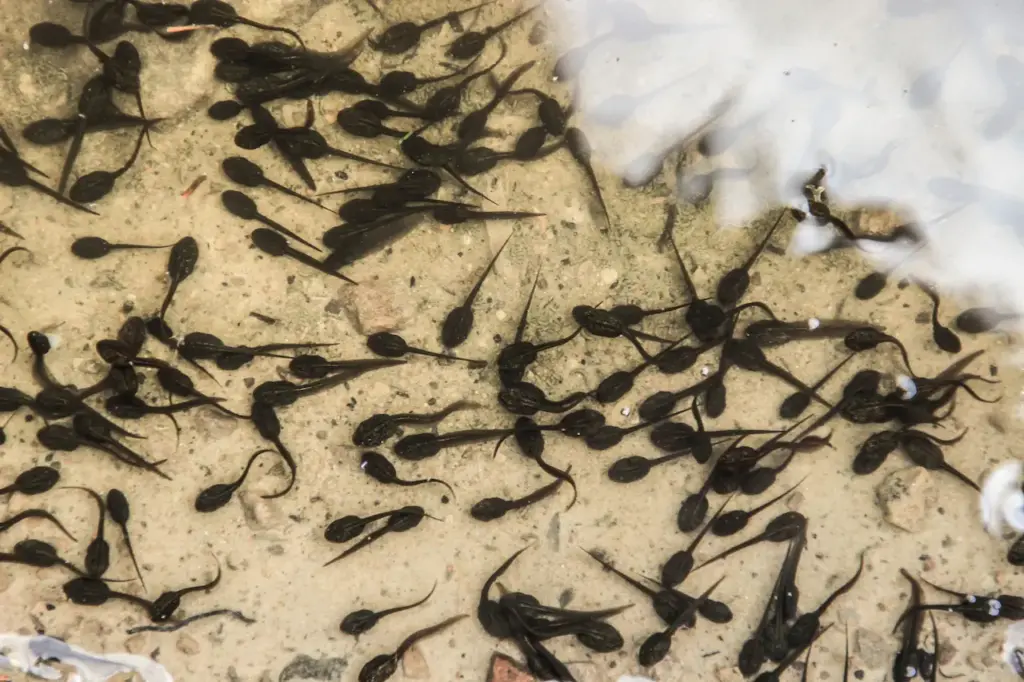
Birds also seize upon seasonal tadpole abundance as reliable food bonanzas for raising chicks when insects may prove scarce.
Gulls, herons, bitterns, ducks, and other water birds patrol ponds and stream banks intently focused on tasty tadpoles detectable and rippling below the surface. These adept hunters collectively scoop up untold legions of developing amphibian young in their beaks daily.
Wading egrets and herons stalk slowly through shallows before spearing tadpoles with dagger-like bills, which are too slow to disperse once a hungry hunter arrives. Groups of coots dive below to chase down speedier tadpoles.
And prowling grebes or mergansers snatch up mouthful after mouthful while swimming amid large congregating masses of tadpoles hatched within days of each other.
Whether a solitary hunter or flock targeting bountiful nurseries, avian tadpole consumers restrain frog populations as much as fish in many areas via substantial predation on vulnerable larvae.
Insects
On a smaller scale, certain insects also prey on segments of tadpole populations, mainly exploiting younger individuals right after hatching. Predacious diving beetle larvae clutches use homelike pincers to seize and consume freshly emerged tadpoles above fragile hind quarters.
Backswimmers jab tadpole vitals with piercing mouthparts. Whirligig beetles swarm to tear at victims. Aquatic bugs like giant notonectids identifiable by visible hunting air bubbles insert enzymes that predigest baby tadpoles that are almost too small to even see.
By attacking at the earliest stages before tadpoles grow stronger and more evasive, these insect hunters destroy many thousands of embryonic frog larvae.
Though individually only ingesting a minuscule single tadpole on occasion, collectively, the hundreds of thousands of insects hunting within large water features like wetlands and ponds have a measurable effect similar to fish and birds in eliminating substantial portions of young tadpoles.
Snakes
Though not often considered, some snakes also actively prey on tadpoles when accessible. Certain water snakes like diamondback water snakes and brown water snakes frequent ponds and flooded areas looking for amphibian larvae.
These serpents even pursue tadpoles into frigid conditions, capable of actually swimming below the ice with just their snouts poking up through the airhole to gulp, surfacing tadpoles trapped by winter’s advent prior to metamorphosis into frost-hardy adults.
Equipped with hinged flexible jaws that open incredibly wide, water snakes swallow small tadpoles by scores. They then digest greater than 99% of each tadpole, meaning dozens may disappear per snake in a single hunting bout.
In the southern U.S., brown water snakes in particular thrive by centering diets around plentiful yearly tadpole recruitment. Other snakes, like garter snakes, raid shorelines of ponds to snatch up mouthfuls at a time from the vulnerable masses.
Though not collectively huge consumers relative to fish, birds, and insects, snakes still eliminate substantial numbers of tadpoles when possible.
Turtles
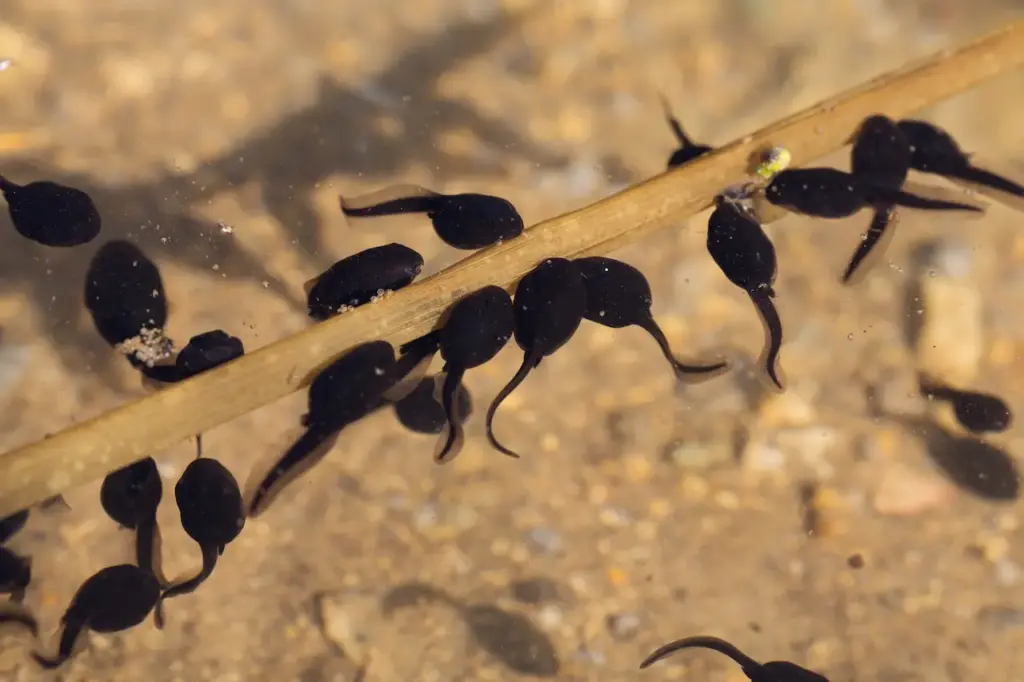
Prominent among tadpole predators lurk various freshwater turtles adept at stalking hatching areas to snatch up free swimming tadpoles or devour entire stationary egg masses left briefly unattended by parent frogs.
Painted turtles, sliders, cooters, map turtles, and even the Common Snapping Turtle eagerly feast on defenseless tadpoles and eggs. Using snake-like necks, turtles grab scores of tadpoles at a stroke and ingest them whole.
Turtles may wait motionless for days for egg masses to appear each spring, then pounce on deployment sites to gulp down gelatinous bunches before guardians return.
Turtles snap at tadpole concentrations in open water or corner them against shore vegetation to consume hundreds in minutes. Though hefty, thick-shelled adults no longer face routine threats from most predators, turtles remain highly vulnerable as miniature hatchlings and juveniles.
So feasting on periodic bonanzas like brief seasonal tadpole abundance offers young growing turtles needed calories.
Conclusion
From the moment of hatching onward, developing tadpoles experience tremendous external threats from all sides in their natal pools and ponds before completing their transformation into adult frogs.
Tadpoles represent bite-sized snacks easily overwhelmed by quick waterborne predators adept at exploiting their underwater realms.
Much like a feast that draws unpredictable predators like piranha and caiman in the Amazon, seasonal masses of tadpoles bring fish, birds, insects, snakes, and turtles running to freshwater breeding sites to reap nutritious benefits.
As animals incapable of replacing substantial losses beyond a certain threshold before population collapse, frogs rely on laying astronomical numbers of eggs that hatch into tadpoles to absorb losses while ensuring some survive to maintain future populations as adults amid such extreme predation pressures.

